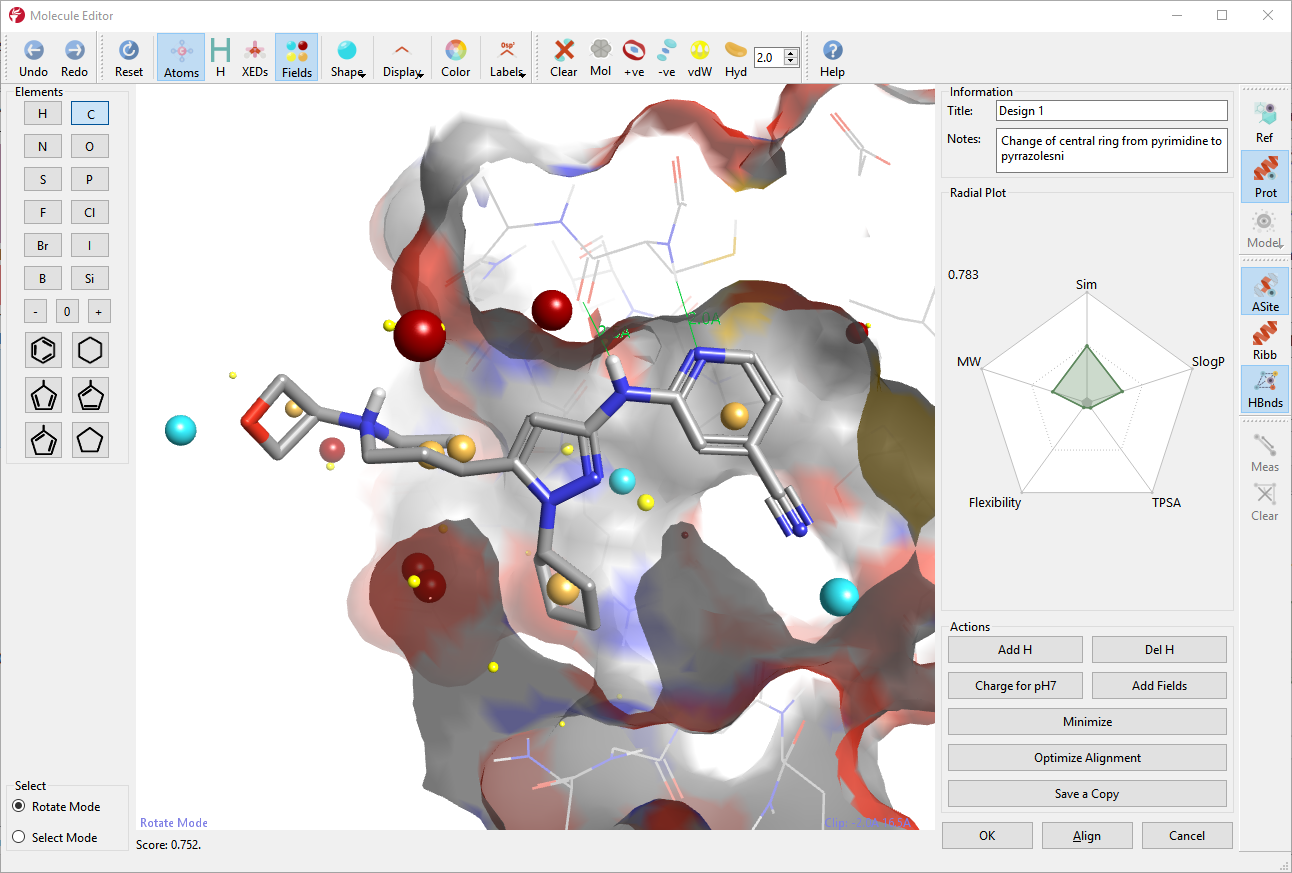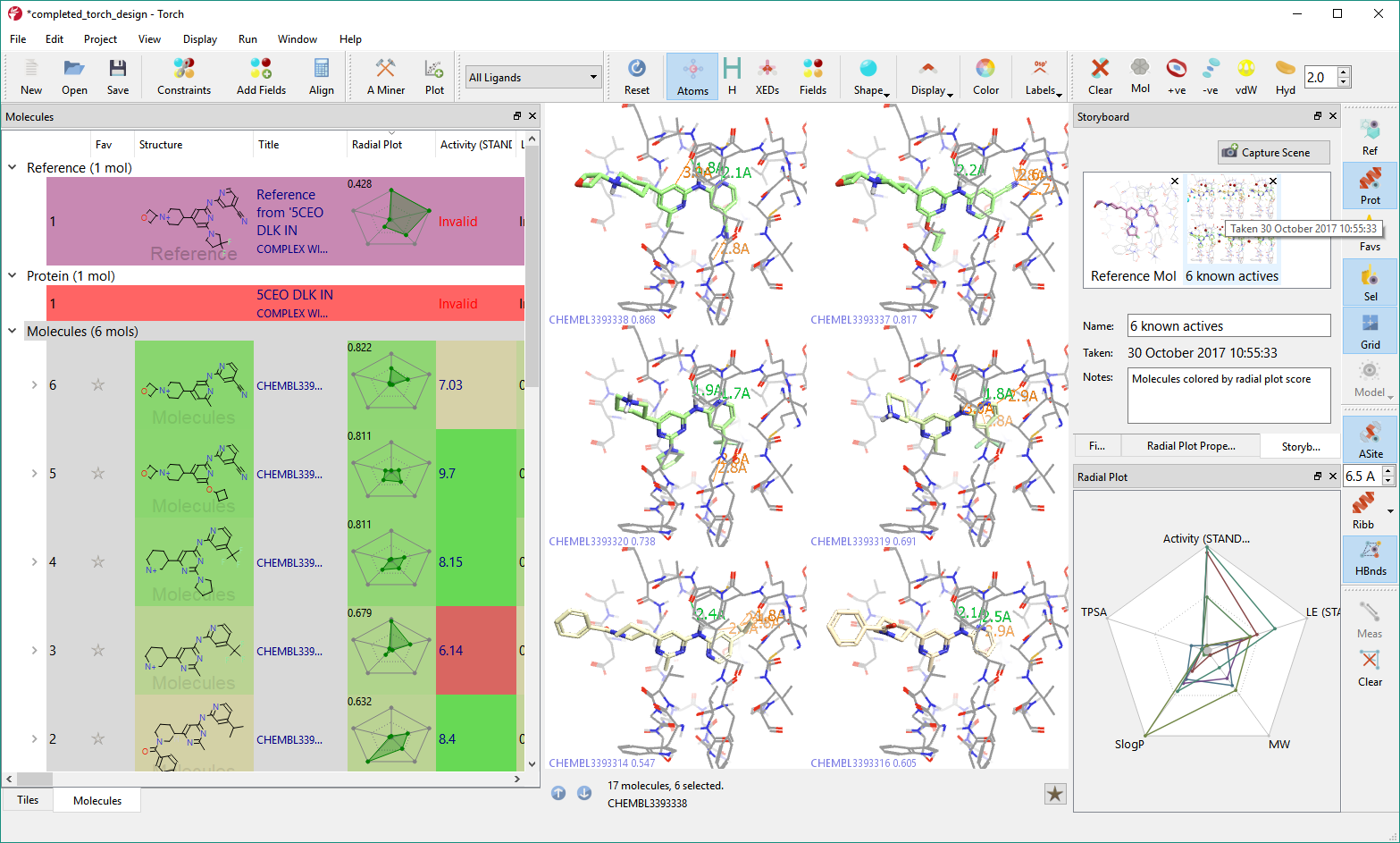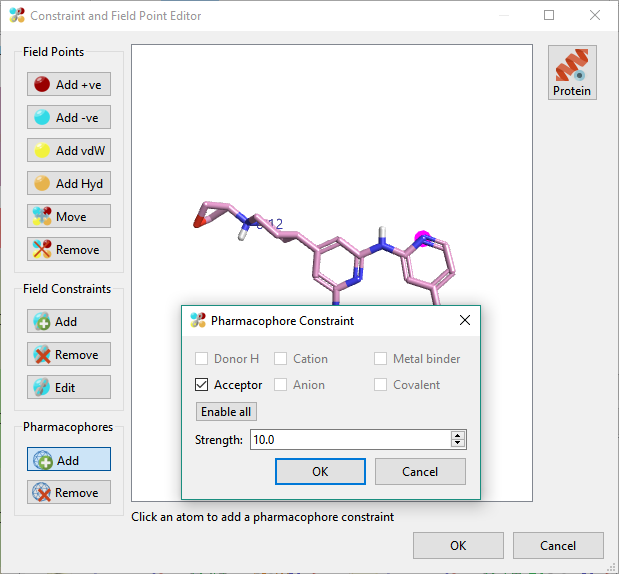Improving PROTAC properties via single-point changes to linkers
We explore how computational methods can be applied to proteolysis targeting chimera (PROTAC) design, to effectively tackle some of the ...
News
Now released and available for download, V10.5 of TorchTM brings new science, improved design workflows, an updated GUI and is recommended for all users.
New pharmacophore constraints give you another way to bias the alignment towards the results that you expect. This new science has applicability to design, ligand alignment and virtual screening. Available pharmacophore types include H-bond donors and acceptors, metal chelators, and covalent centers.
The design workflow has been improved by including and updating physico-chemical properties in the editor as you design. You now get immediate feedback on how your design fits with critical physio-chemical property profiles and for predicted activity (through Forge QSAR models) through inclusion of the radial plot in the editor.
Lastly we have updated the GUI styling and improved usability throughout the application to streamline your molecule design process.
Design is central to Torch. In this version we have taken a look at the workflow and come up with significant enhancements. You told us how much you liked the immediate feedback for scoring of molecules against the reference and against QSAR models developed in Forge, but wanted us to extend this to physico-chemical properties. To satisfy your request we have introduced the radial plot into the editor enabling rapid, visual feedback of the fit of physico-chemical properties to a project profile as you draw your new designs. This will significantly help you to design molecules that have the properties that you want without having to spend time parsing large amounts of numerical data or having to exit the editor when you think that you have a good design.

The last stage for any design is to communicate it to others. In the previous version of Torch we introduced Storyboards to enable you to capture particular 3D views for later recall. In V10.5 we have signicantly improved storyboards to better serve your communication. All storyboard images are now stamped with a time and date, can be given a title and annotated with detailed notes to enable others to understand the story, whether or not you are there to talk it through.

We know that our approach often gives superior results to other methods when aligning diverse and congeneric series but there are times when you want more control to weight the alignment towards a particular interaction. This has always been possible in field space, but you wanted the ability to more tightly control the type of atoms that are aligned. In this version we have added pharmacophore constraints into the alignment. This option enhances the already present field and excluded volume constraints such that you can specify that a particular pharmacophoric atom type must be in a specific location in the aligned molecules or the score is penalised. The result is significantly higher control over the alignments. Forge V10.5 has more on this exciting feature and how it affects the alignments, while the recent Blaze V10.3 announcement describes the effect on virtual screening performance.

Our field based alignments give an excellent view of how ligands compare from a potential binding interactions’s point of view. The results compare favorably with structure-based approaches such as docking. However, when looking at activity cliffs, and particularly the underlying causes of the change in activity, a more ligand centric alignment often gives better results. For that reason we introduced the option to align using substructure in previous versions of the software. Torch V10.5 revisits that algorithm, making a number of improvements behind the scenes to deliver the results that you expect even more frequently. This is the heart of Torch and we are delighted to release an improvement to what was already very good.
Alongside the specific workflow and scientific improvements we have introduced a number of enhancements to the Torch interface. These include new options for protein ribbon display, improved measurement and protein-ligand contact display, an improved grid view function, improved support for stereo, tagging of molecules directly from the 3D window, updated and clearer icons, and completely new widget for adding constraints.
Upgrade at your earliest convenience to benefit from the many new and improved features in this release.
If you are not currently a Torch customer, download a free evaluation.